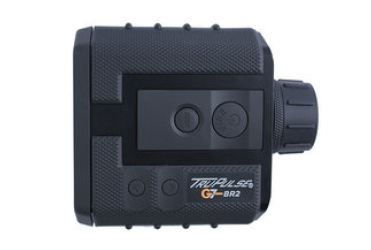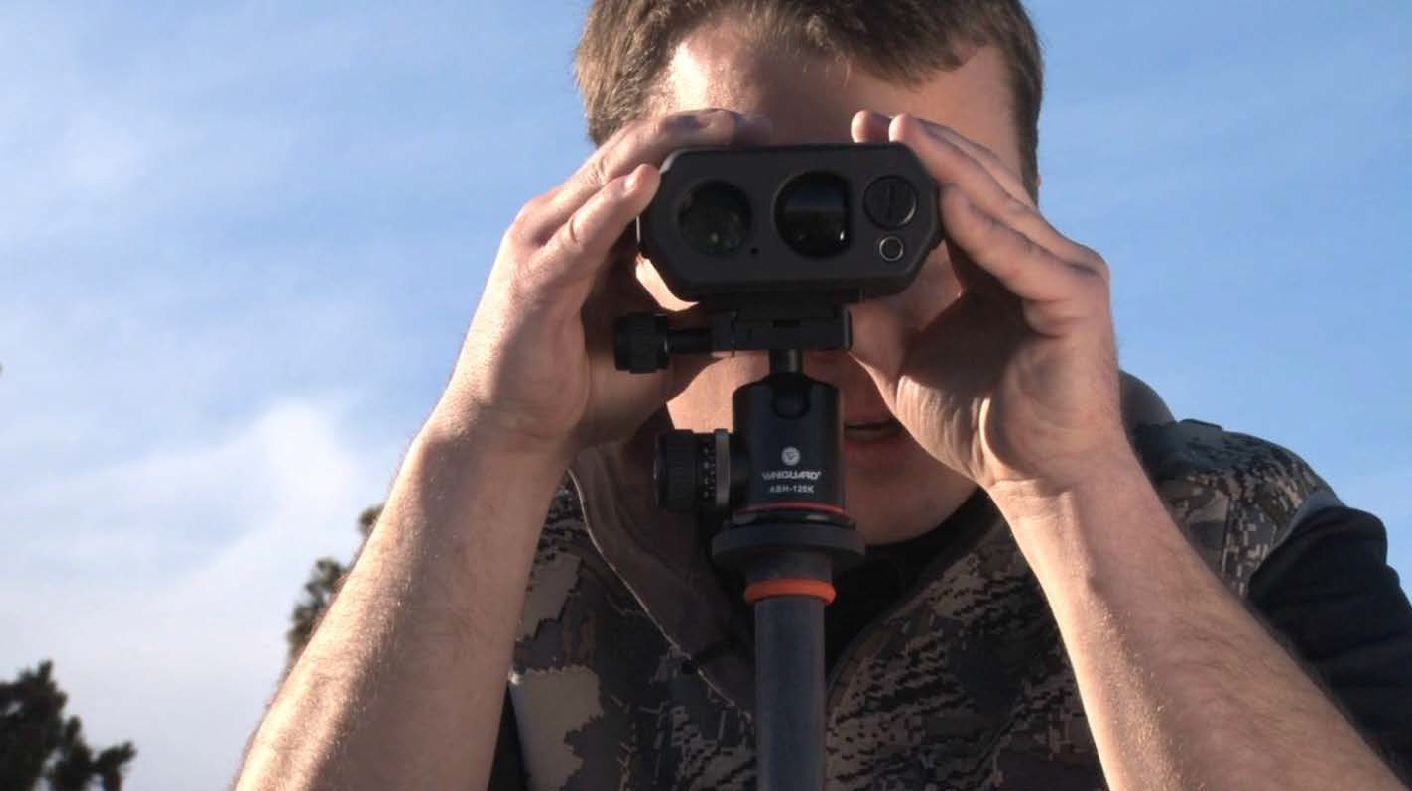The long range revolution started in the late 90’s with the introduction of the handheld laser rangefinder to the consumer market. These units gave accurate ranges in a portable package without breaking the bank. Without the laser rangefinder, long range shooting was a game of big cases and light bullets trying to extend the point blank range of the cartridge and minimizing ranging errors. This would only get a bullet so far with enough precision for an ethical kill. With a rangefinder and a ballistic program, compensating for bullet drop became a whole lot more sophisticated, but much easier as well. Just get a range, calculate the ballistics and hold the reticle, or dial the scope, to correct for bullet drop.
As rangefinders improved, and allowed precise measurement at increasingly distant ranges, other factors began causing misses and required attention and correction. Namely air density changes from shooting at different elevations and temperatures and point of impact shift from shooting on an incline. All sorts of gadgets and devices have evolved to assist the long range shooter in his efforts to compensate: handheld computers with ballistic software, weather stations that measure barometric pressure and temperature, rifle mounted angle/cosine tools that indicate the angle of incline or decline.

Now, new model rangefinders are ranging farther than ever, and the new G7 BR2 (Ballistic Rangefinder 2000) stands out in a crowd of impressive devices. The ranging capabilities have set the new standard all handheld rangefinders will be judged by, but that is not the feature that defines the BR2.
The G7 BR2, from Gunwerks, has achieved a significant milestone in shooting technology. It combines, in one compact device: a world class rangefinder, a handheld ballistic computer, a weather station, and an angle measurement device to calculate a precise ballistic solution for compensating for bullet drop and wind deflection.
All other ballistic rangefinders require selection of a ballistic profile from a family of curves, or the just make some approximation of a ballistic range by correcting for angled shots. This type of ballistic compensation is similar to hold over reticles designed to work for all calibers—it has a limited range of accuracy. Generally, 500 to 600 yards is a realistic maximum for this type of generic ballistic compensation.

The first of it’s kind, the G7 BR2 from Gunwerks, combines a world class rangefinder, a handheld ballistic computer, a weather station, and an angle measurement device to calculate a precise ballistic solution for compensating for bullet drop and wind deflection.
However, the BR2 model is the first rangefinder to feature a real time ballistic calculation that accepts your specific bullet Ballistic Coefficient and Muzzle Velocity as inputs to build a custom ballistic profile, and then calculate a real time ballistic solution. The solution measures and accounts for line of sight range, air pressure, air temperature, and shot angle, in addition to the cartridge ballistic parameters programmed into the device. Programming is simple, and accomplished through a simple four button interface. The main inputs are bullet ballistic coefficient, cartridge muzzle velocity, sight height, and zero range. The calculation output and drag model are also selectable to match bullet type and compensation equipment. Five different custom cartridge profiles can be stored at one time on the device.
Operating the device is simple. One button press will return the line of sight range, and the ballistic solution. This solution can be output in different units, the most universal is MOA (minutes of angle). The majority of rifle scopes have adjustments for elevation and windage in MOA—usually ¼ MOA per click. Remember 1 MOA is approximately equal to 1-inch at 100 yards. For example, we have programmed a BC of 0.617 and a MV of 3000 fps. When the button is pressed a range of 800 yards is measured along with the air density and shot angle. The range of 800 yards is displayed along with the drop correction of 14.6 MOA. This value would be dialed into the rifle scope, or elevated if using a reticle. You may also select BDC output, and calculate an equivalent shoot to range if you are using a ballistic turret calibrated in yards. The G7 BR2 offers a one button ballistic range or MOA correction for simple long-range range shooting. The main features of the BR2 are listed for convenience.
The G7 BR2 list of features are as follows:
- The rugged housing is weatherproof and features a GoreTEX membrane. The tripod mounting stud is ¼-20 on the bottom of the housing.
- The eyepiece features an adjustable diopter with a click adjustable twist-up eye cup.
- Ballistic calculations are powered by the advanced G7 ballistic engine. The precise algorithms are configured to allow ultra-fast real time calculation.
- Shoot To range compensates the line of sight range for variations in air density and inclination angle. The output is specific to the programmed BC and MV. Shoot To range is configured to work with BDC turrets or holdover reticles.
- Wind Compensation is a core function of all G7 products and the BR2 rangefinder is no exception with patented compensation technology. MOA wind correction values are calculated and easily accessed to display the correction for different wind values.
- Onboard sensors measure incline angle, compass heading, barometric pressure, and temperature. These sensors provide the data to the G7 ballistic engine to calculate the Shoot To range.
- Programmable for up to five different cartridge combos. Specific inputs include: Ballistic Coefficient, Muzzle Velocity, Sight Height, Altitude, and Temperature.
- Very simple Intuitive Display offers selectable reticles and four intensity settings for varying light conditions. The Backlight LED display is visible in low light conditions.
Simply put, the precision and accuracy of your shooting is only as good as the data you have in front of you. The new G7 BR2 from Gunwerks has combined everything a long range enthusiast needs and put it
G7 BR2 Product Review